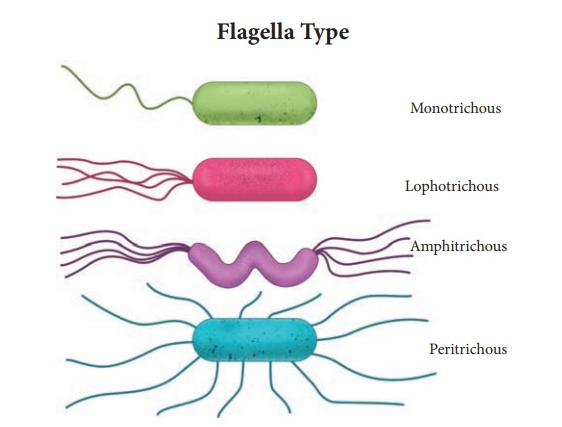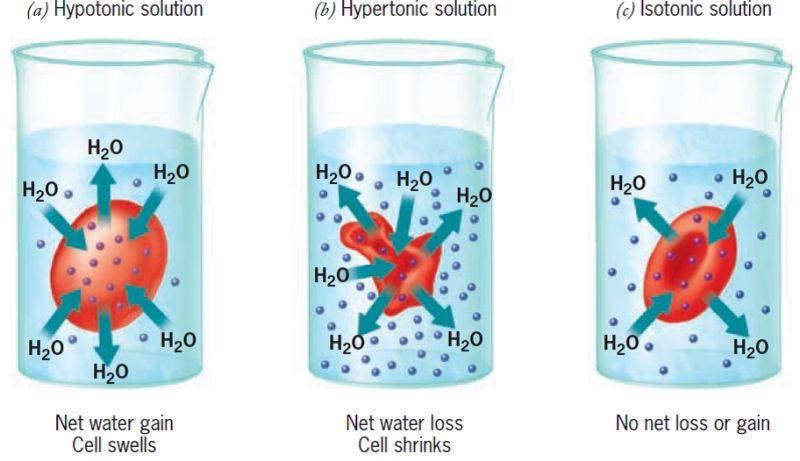chapter 7,8,9
1/42
There's no tags or description
Looks like no tags are added yet.
Name | Mastery | Learn | Test | Matching | Spaced |
|---|
No study sessions yet.
43 Terms
What are the three basic shapes of bacterial cells?
Coccus (sphere-shaped)
Bacillus (rod-shaped)
Spiral (spiral-shaped)
Which shape is most resistant to drying and why?
Coccus- has a low S/V ratio
Which shape is most sensitive to drying and why?
Spiral- high S/V ratio
What is the difference between virulence and a virulence factor?
Virulence- the degree to which a pathogen CAUSES disease
Virulence factor- component of an organism that determines its capacity to cause disease
What is a prokaryotic glycocalyx?
A sugar layer “coat” surrounding the cell
Made up of polysaccharides, polypeptides or both
Made inside cell
What two types of glycocalyx can you find in bacteria?
capsule
slime layer
function of capsule
Capsule
Firmly attached to cell wall
Protects cells from phagocytosis.
Attachment to tissue
food source
biofilm attachment
function of slime layer
Loosely attached to cell wall
Trap nutrients
biofilm attachment
What is a eukaryotic glycocalyx? What is its function?
Made up of carbohydrates covalently bound to the plasma membrane
Function:
Strengthen cell
Attachment
cell to cell recognition
What is a flagellum, and what is its function
Long appendages for propulsion.
3 Basic Parts of Bacterial Flagella
Filament
Hook
Basal body
Movement of bacterial Flagella
Prokaryotic- propellor movement; counter or clockwise
Eukaryotic- Wavelike movement; sperm-like movement
Protein comp & arrangement of bacterial flagella
Made up of amino acids that are joined together by a peptide bond
Primary structure-sequence of amino acids (a polypeptide)
Secondary structure-alpha helix and beta pleated sheet (H bonds)
Tertiary structure-#3D structures (Disulfide S-S bonds)
Quaternary structure- two or more peptide chains
difference between composition
Eukarya
- Enclosed by plasma membrane
- Internal microtubules 9+2 arrangement
- Long microtubule made of tubulin protein
Prokarya
- Antigen (Ag) (immune system stimuli)
- H Ag- Flagella
- O Ag- LPS
- K Ag- Capsule
What are the taxonomic divisions based on number and position of flagella?
Monotrichous-single flagellum
Amphitrichous- Flagella tuft @ each pole
Lophotrichouos- Flagella tuft @ 1 pole
Peritrichous- Flagella covering whole surface

What is taxis? What are two types of taxis?
Bacterial movement
1. Chemotaxis- chemical stimuli
2. Phototaxis- Light stimuli
What is an axial filament? How does it differ from flagella? In what type of bacteria do you find axial filaments?
- Internal Flagella- a drill like structure wrapped around the cilia (drills through tissue to escape immune cells)
- Flagella causes movement; axial filament only allows for movement
- Only in spirochete bacteria
Compare and contrast fimbriae and pili (make-up and function).
Similarities
· Short hair like appendages
· Used for attachment
· Gram negative only
· Composed of pilin protein
· Shorter-thinner than flagella
Compare and contrast fimbriae and pili (make-up and function).
Differences
Fimbriae
- Polar position or over whole surface
- 100/cell
- Function in adherence
- Biofilm formation
Pili
- Longer than fimbriae
- 1-2 per cell
- Twitching motility
- “Sex function” Transfer DNA (conjugation)
What is the function of the cell wall?
Resist osmotic pressure, protects membrane and interior from inverse environmental changes, anchorage for flagella, contributes to ability to cause disease for some species, site of action for some antibiotics, and used to differentiate bacteria
What is the cell wall mainly composed of? Be specific in the parts which make up this main component also.
The major component is peptidoglycan, made up of a disaccharide attached to polypeptides to form a lattice around the plasma membrane.
Disaccharides are N-acetylglucosamine (NAG) and N-acetylmuramic (NAM)
Pentapeptides are five amino acids that are attached to NAM that are cross-linked with peptide cross bridge
What is teichoic acid? What type of bacteria do you find it in? What is its function
Alcohol and phosphate parts
Found only in Gram + cells
Regulates cations in and out of the cell, regulates autolysins that degrade the cell wall, antigenic specifically for identification, and anchors the cell wall to the plasma membrane
What is lipopolysaccharide? What type of bacteria do you find it in? What does this molecules act as in the human body?
A molecule that has both lipid and polysaccharide parts that is found in Gram – cells
In humans, this is capable of producing fever, blood clots, weakness, shock, and even death due to hemorrhagic shock
What is a porin? What type of bacteria do you find it in?
Channels for small anionic compounds or amino acids that are found only in Gram - cells
What is lysozyme? What is its function?
An enzyme that breaks down the NAM-NAG backbone in Gram + cells in order to destroy the cell wall
What is penicillin? What is its function? Where is its specific site of action (figure)? What type of bacteria is it more active against and why?
Antibiotic that prevents crosslinking from occurring (synthesis of call wall)
Target the crosslinking between chains of polypeptides that is found in the peptidoglycan
More active against Gram + because it does not allow the forming of new cell walls but for Gram – the outer membrane blocks the penicillin from entering the peptidoglycan
What is the function of the plasma membrane? What is it composed of to contribute to these functions? What is the fluid mosaic model?
The function is to separate the environment from self, selectively permeable, ATP production in prokaryotes, and contain carbohydrates for eukaryotes
Made of a phospholipid bilayer and proteins
States that phospholipids and proteins move laterally and freely
Compare and contrast passive and active process transport mechanisms?
Passive transport
No energy is required and moves with the concentration gradient
Uses simple diffusion for small molecules and osmosis for water
May use channel and protein carriers for larger molecules
Active process
Energy required because of the movement against the concentration gradient
Uses active transport- 1 protein not changed during or group translocation- multiple proteins and molecule is changed
Compare and contrast simple diffusion, osmosis, facilitated diffusion, active transport, and group translocation.
Simple diffusion- movement of small molecules
Osmosis- the movement of water across the membrane down a concentration gradient
Facilitated diffusion- transport of larger molecules like amino acids with a concentration gradient by using a plasma membrane protein
Active transport- a single protein is required, and the molecule is not changed during transport
Group translocation- multiple proteins may be required and molecule is changed during transport. Does not occur in eukaryotic cells
Define isotonic, hypotonic, and hypertonic. Diagram a cell in each solution and the general solute and H2O concentrations and net movement of water.
Isotonic- solution with the same solution concentration as inside of the cell. Water will stay equal, net change=0, and water will go in and out of the cell equally
Hypotonic- Solution with a lower solute concentration than the inside of the cell. Water will go into the cell, cell may grow
Hypertonic- solution with a higher solute concentration than the inside of the cell. Water will leave the cell due to osmosis, cell may shrink

What is the cytoplasm? What is the main component of the cytoplasm?
Contains proteins, carbohydrates, lipid, inorganic molecules, and low-molecular weight compounds, various organelles
80% water
Compare and contrast the genome of the prokaryote and the eukaryote.
Prokaryotes-singular chromosome, circular, no histones (other proteins), found in nucleoid, plasmids
Eukaryotes-multiple chromosomes, linear, histones, found in nucleus, no plasmids (generally)
What is a plasmid? What is the function of a plasmid? In what type of cells would you find them?
Small, circular, extra chromosomal DNA that replicates independently of chromosomes
Can be transferred by conjugation and carries gene resistance and metabolism genes
Used as a cloning vector in biotechnology
What is a ribosome? What is the function of a ribosome?
Site of protein synthesis that is composed of proteins and rRNA
Main target for antibiotics because they are different in eukaryotes and prokaryotes (80s and 70s)
What is an inclusion body and what is its function?
Reserve deposits that are excess compounds insoluble in water that hold phosphates, sulfur, lipid compounds, etc.
What is an endospore? In what type of cells do you find them?
“resting” cell that is unique to bacteria
Under what conditions are endospores formed by bacteria?
Cells detect some environmental change and then form endospores
What is the structure of an endospore?
Dehydrated, durable spore coat, contains DNA of a cell, Dipicolinic acid, no metabolic reactions
How can endospores be important in taxonomy?
Classified based on where the endospore forms (terminal-to one side; central-in the middle; subterminal- in between terminal and central)
Provide some information about the Schaeffer-Fulton staining.
Drive malachite green into spore with heat
Rinse with water
Counterstain with safranin
Cells are stained reddish pink and endospores are green
What are some characteristics of endospores?
enable bacteria to lie dormant for extended periods, even centuries. When the environment becomes more favorable, the endospore can reactivate itself to the vegetative state.
How is sporulation different between bacteria and fungi?
Bacteria- gram-negative, rod-shaped, aerobic
Fungi- various sizes, shapes, and other surfaces
What is the structure of an endospore
Dehydrated, durable spore coat, contains DNA of a cell, Dipicolinic acid, no metabolic reactions